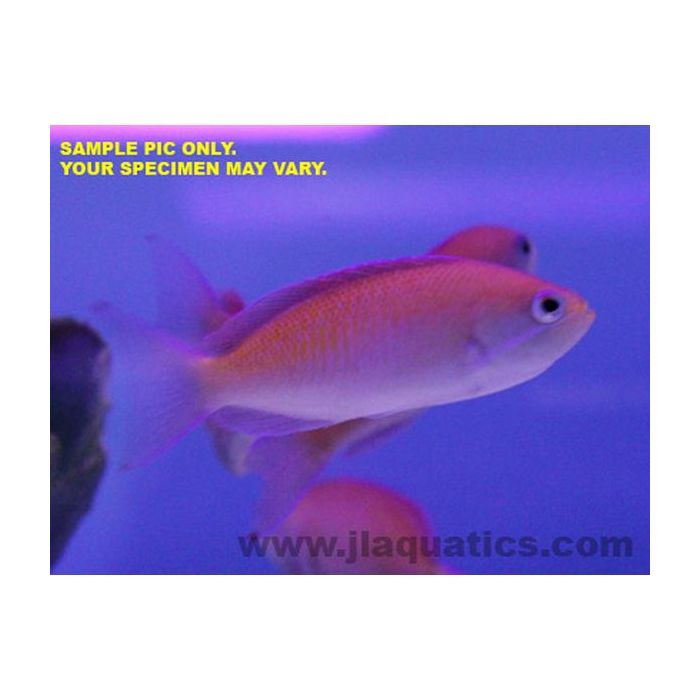Red Fairy Anthias (Indian Ocean)
Anthias are active, colorful, reef safe, and generally quite peaceful fish. They pose little to no danger to any other aquarium inhabitant, other than small competing zooplanktivores, such as dart fish and flasher wrasses, which they may chase into hiding.
The key to success with anthias is frequent feeding. Because of their activity level they have a very high metabolic rate, and should be fed a minimum of three times daily. Diet should include plenty of high quality meaty items such as frozen Mysis shrimp, marine algae and Spirulina, enriched brine shrimp and Calanus. Anthias are such enthusiastic feeders they usually learn to eat dry foods quickly, but if they are fussy the dry food can be mixed in with the frozen to encourage consumption. A refugium is helpful in supplementing the main aquarium with live prey items. Additional supplements and vitamins may also aid in maintaining the fish's vivid colors.
Anthias are prone to jumping from the aquarium when startled or excited so we recommend a secure lid.
In the wild most anthias species are found in huge shoals consisting of mainly females and juveniles. In the aquarium they are perfectly happy alone, but if a shoal is desired the aquarium must be of sufficient size to ensure the smallest and weakest fish have space to escape the larger and more aggressive members. A group of at least six females added together can work, and in time the largest fish transforms into the dominant male. He is typically brighter and more colorful than his harem. If he will be added together along with his shoal then as many females and juveniles as possible should be added.
The Red Fairy anthias is a lovely fish with bright colors. Males are deep red to orange with a pale red blotch on their flank, like a bleeding heart. The leading edge of his dorsal fin is also intense red, and when displaying a yellow streak may show along his back. Females are a rosy color with golden scales on their sides and a white belly. May be mixed with other anthias species in a large aquarium. Also known as the Tricolor anthias. It grows up to 6 inches; we recommend an aquarium at least 75 gallons for a single fish and larger for a group.

